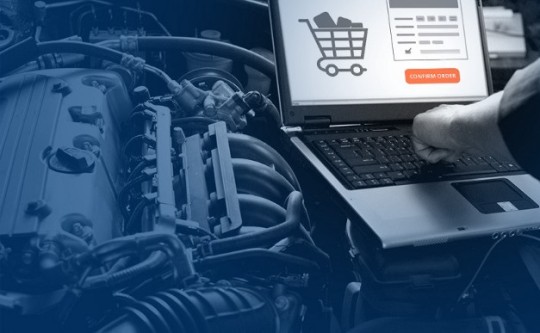Don't wanna be here? Send us removal request.
Link
AutoDAP is a Smart Data product company in the Automotive Aftermarket arena. Owing to our extensive knowledge and a unique understanding of the European automotive market, we help businesses transform faster by minimizing risks and improving profitability.
0 notes
Link
AutoDAP is an innovative product company which simplifies vehicle identification by providing VIN precise vehicle information, enabling exact parts identification along with extended vehicle data.
0 notes
Text
Automotive Aftermarket in Fast Lane with e-Commerce
Selling mechanical parts online has never been easy but it is becoming increasingly inevitable to have online presence for Automotive Aftermarket players such as Parts Sellers, Retailers and e-tailers. With changing consumer behavior and the emergence of Do-it-yourself (DIY) economy, automotive aftermarket players are actively positioning their business towards e-commerce.
A vast majority of the aftermarket business is focused on replacement parts, which allows vehicle owners to maintain their vehicles longer with greater efficiency. This phenomenon holds true in case of sluggish economic growth where vehicle owners prefer to repair their old car instead of buying a new one. This premise has created a lucrative opportunity for Aftermarket players to build a more robust e-commerce strategy.

Compared to other automotive consumer products, the penetration of e-commerce for parts is less. Undoubtedly, the aftermarket is evolving at a fast pace and has realized the benefits of fast-growing ecommerce channel. As Technavio depicts, “Global e-commerce sales for the automotive aftermarket are projected to grow at a compound annual rate of 18.9% from 2017 to 2022, reaching $49.5 billion in 2022”.
With the rise of convenience economy coupled with fast internet connectivity and smartphone penetration, Automotive customers prefer shopping for vehicle parts online. No surprise that this e-commerce drive for selling auto parts is led by giants such as Amazon and eBay by building and deploying intuitive, technologically robust and scalable shops. Amazon, over the years, has been able to deliver value for consumers by deploying concepts such as “same-day delivery” in major cities allowing them to capture a large market share from automotive parts sellers and other outlets that cater to price-sensitive do-it-yourself (DIY) vehicle owners, including gas stations, mass merchants, and local hardware stores.
To compete with the bigwigs, traditional retail chains and distributors are actively extending their cataloguing features and capabilities to attract vehicle owners. These retailers also have to compete against the learner, fitter pure-play e-tailers with streamline supply chains and price discounts at their disposal. However, in order to counter the threat of e-tailers, traditional retailers can rely on their brick-and-mortar presence to fulfil ‘Last Mile Delivery’, considered as the holy grail in distribution channel.
Additionally, these retailers have realized that they need to deploy a comprehensive e-commerce strategy in which online convenience enhances the in-store customer experience and leverages the distribution network and in-store employee expertise. However, the most critical element in achieving success and bringing more vehicle owners to your web shop is your ability to achieve parts accuracy. In a hyperactive competitive environment where incentive for users to switch to competitors’ web shop is enormous and churn rate is piling up, it is imperative that these retailers are able to enhance search criteria to display the most accurate and relevant spare parts to vehicle owners.
Typically, demand for complex mechanical parts or components such as powertrains or disc brakes etc. is lower compared to easy to deploy parts and vehicle accessories. On top of that, users do not have adequate technical knowledge to determine the right part for their vehicle. Additionally, the weight of many mechanical parts can increase the shipping costs.
Owing to these challenges and opportunities, e-commerce is the future for the automotive aftermarket, which is estimated to contribute 10–15% of the overall aftermarket revenue in North American and Europe by 2020.
AutoDAP, a Smart Data solution platform is poised to help the automotive aftermarket transition in their digital transformation journey. With decades of Automotive experience and unique understanding of the European automotive market, we help businesses transform faster by minimizing risks and improving profitability. Parts Sellers, Concept Workshops, Dismantlers, Insurers and Used Cars dealers can lookup car specs by VIN number and derive parts information accurately. To learn more or for a quick product demonstration, you can contact us at [email protected] or visit us at www.autodap.parts
0 notes
Text
How Automotive Aftermarket is Embracing Technology to Meet Customer Expectations
The automotive aftermarket is affected considerably by increasing customer expectations and evolving technologies. These changes have impacted how automotive suppliers and auto aftermarket companies are conducting business and how they aim to deliver value.
The emerging markets will increase pressure on automotive aftermarket industry to act sooner. There is increased competitive pressure from players who deliver at different levels of aftermarket value chain and those driven by tech-based business models.

The aftermarket of the automotive industry includes services and parts businesses. The service business that includes the maintenance and support generates 45% of total revenue, while retail and wholesale of vehicle parts identification or oem part number lookup include the rest. These two aftermarket businesses entail around 20% of total automotive revenues with more profitability ratio than other sub sectors.
The market is also divided into
Parts manufacturers such as OEMs and automotive suppliers that produce parts and offer services
Parts distributors who constitute independent distributors and retailers
Workshops, including OEM networks, system chains, and garages
Intermediaries including auto clubs, leasing companies, and portals
The industry as a whole is affected by major disruptions, owing to digitization and changing consumer preferences. The use of smartphones has enabled new and advanced mobility services, including taxicab services, information search offerings, and online purchases. In recent years, one can witness the consolidation of parts distributors and trends and new players entering the automotive market. The legacy companies are now forced to tweak their business models to stay relevant to consumer preferences, while stricter regulations on emissions have led to the rise of electric vehicles.
Some of the present and future trends include:
Digital channels influencing customers’ research and purchasing affinity in emerging markets. Customers rely on online reviews as a way to boost their purchasing decisions.
Suppliers, OEMs, distributors, and the like will bring their services online while launching new platforms.
The e-commerce share of parts sales is expected to rise by 20% in a couple of decades but logistically demanding parts including airbags that lack clear logistics and transport plan will continue to be sold through traditional wholesale channels.
Aftermarket players boosting their value via digital channels as enhanced connectivity and collaboration will help them reach their end customers better.
Since the automotive industry is evolving as a hub of software and applications, tech giants will have a huge role to play in the aftermarket. New software entrants could compete with parts manufacturers and distributors to secure profits.
OEMs and online providers can drive their influence on end customers, shrinking their returns in turn to guarantee the complete interest of their clients.
The short value chain means that some players will expect margins to continue to be stable or even get boosted, owing to the fact that distributors will be divided among different customers, manufacturers, and shops.
One can expect parts distributors and workshops to drive their individual market presence with consolidation and collaboration while intermediaries will strive to connect customers and services with new profit channels and opportunities. Software enabled solutions are aligned to new expectation of agility and personalization. Aftermarket may tend to be a follower but embracing the smarter tech based solutions is the only way to survive and stay relevant.
#vehicle parts identification#VIN Precise Vehicle Identification#auto part number cross reference#look up car parts by vin number#oem part number lookup#spare parts management system
0 notes
Text
Know The Right Information About Your Car Parts Through Vin Decoder
It is common to look up car parts by Vin number as this is the easiest way to get correct information about car parts. The Vin number is accessible from outside the car just from the driver’s side of the vehicle. You can also look up car parts by Vin number on the side door of the driver’s side. Just by opening the door and having a closer look at the area where the door connects the latches of the car you can easily find car parts. Still, if you find it difficult to find the Vin on the car body, you can always find the same on the insurance card and the title document of your car.
You may feel inquisitive about what makes vin decoder so important. What important purposes it serves. Let us try to answer these questions one by one.
What exactly is a VIN? A VIN is the abbreviated short form of the vehicle identification number. This unique alphanumeric code assigned to every car can help identifying a vehicle instantly. Each part of this alphanumeric code provides a specific information about a car that includes the year of the make, brand, model, engine size, country of the origin and the factory where the car was made.
In case the vehicle was made earlier than 1981, there is good chance that the Vin code will comprise less than 17 characters. All the vehicles built in post-1981 period will invariably have 17 characters Vin code. As far as decoding is concerned the 17 character Vin code of the post-1981 era works best.
The principal reason VIN is so important? For buyers knowing correct information about all car parts and attributes is very important to evaluate and compare the competitive standing of the vehicle. It is equally important for old and new vehicles. When buying a used vehicle the buyer obviously needs to check the car history including the past records of accidents.
On the other hand, law enforcement agencies can recover a stolen vehicle by decoding this code. The car manufacturers also for recalling the owner can use this code. For car servicing also service centres can decide this code to know the details about the parts. Service engineers can look up car parts by Vin number and decide the parts used in the vehicle.
The Vin is also a robust solution to track and manage vehicles by fleet management and logistics services. Many companies can identify each vehicle in a fleet through this unique code.
On customers part, they can decode this unique vehicle number and use the information for regular service and maintenance purposes. The code also helps customers to keep up with their car title renewals and aspects related to car insurance policies.
Vin serves as the irreplaceable unique code to track right vehicle information for all stakeholders in automobile sector including customers, manufacturers, car traders and distributors, old car resellers, service and maintenance centres and fleet management services.
0 notes